Rheinsberg nuclear plant
Inside the belly of the beast
The enemy is invisible, silent, devastating and deadly. You don’t know it’s there until it’s too late.
You might not know at all; poisoned by a mysterious foe, an unknown illness. It’s relentless, persistent, no putting it out, no flick of a switch will turn it off.
More than 30 years after the Rheinsberg nuclear plant was shut down, efforts continue to turn it into a “new-clear” plant.
Decommissioning of Kernkraftwerk Rheinsberg was due to have been completed by now, but, well, they’re still at it. And the refuse from East Germany’s first nuclear power station will continue to cast a threat long after the country itself was extinguished.
The radioactive fuel rods and reactor have been transported to an overground storage facility, Zwischenlager Nord (ZLN), beside the nuclear power plant at Greifswald at the Baltic.
As a “Zwischenlager” it’s seen as a temporary solution. The current wisdom is to bury all the radioactive waste in a bunker 10 kilometers under the ground and forget all about it, once they find a suitable site. So far efforts to find an “Endlager” have been concentrated on Gorleben.
Construction of the Rheinsberg nuclear plant began in the late 1950s after an agreement was struck between the East German authorities with their Soviet counterparts in 1956.
The Soviets and East Germans worked closely together on the project and Rheinsberg had the first Russian-built VVER-2 pressurized water reactor outside the USSR.
Set between Stechlinsee and Nehmitzsee in an area of great natural beauty, it went into production on May 9, 1966, when it was heralded as a monument to socialist achievement.
Apparently the plan was to build 15 such facilities, reducing the dependence on brown coal, but that never came to fruition.
Greifswald followed and there were plans for the largest power plant in Germany at Stendal, but they faltered too following German reunification.
Run by VE Kombinat Kernkraftwerke Bruno Leuschner, Kernkraftwerk (KKW) Rheinsberg produced 70 megawatts, enough to power the city of Potsdam, but relatively humble for a nuclear facility.
“It wasn’t intended as a commercial plant, but to show that nuclear power could also be used for peaceful purposes,” explained Jörg Möller of Energiewerke Nord GmbH (EWN), the crowd now dismantling it.
Rheinsberg stopped production in 1990 but it’s not quite “abandoned” – you just can’t leave an old nuclear power station willy nilly from one day to the next – so there’s no hopping the fence to see this site.
Security is still quite stringent and passports were required in advance for visits. But I’ll give visiting details later on.
Herr Möller rattled off more facts, numbers, statistics, percentages and reports than a normal being could shake a stick at.
Only a physicist would have been able to even consider shaking a stick at them, but he reckoned nuclear power was a misunderstood beast, given a bad name (naturally) through disasters like Chernobyl and Fukushima.
But he didn’t touch on other concerns, less attention-grabbing, such as increased prevalence of leukemia among Welsh children near the Irish Sea or above average cancer rates on the east coast of Ireland as a result of the Sellafield power plant in Cumbria, England. Norway has also raised concerns over Sellafield.
KKW Rheinsberg provided employment for around 670 workers. It contributed power to the grid for more than 130,000 hours, giving around 9,000 gigawatts altogether, before it was shut down on June 1, 1990 for fuel rods to be changed and major maintenance works.
It would never restart.
The Kernkraftwerk was already on borrowed time by then. It was only supposed to be in operation for 20 years, but ‘tis hard to let such a beast go, and reconstruction work was carried out in 1986/87 to keep it going for another five years to 1992.
It didn’t make it that far though. German reunification spelled the end. Rheinsberg didn’t meet West Germany’s Atomgesetz, safety standards, and would have needed a ton of costly work to bring it up to the required standard.
It had served its cause.
After a bit of humming and hawing, it was finally decided to close it down for good on Oct. 12, 1990 and let decommissioning begin. Decommissioning was approved by the relevant authorities on April 28, 1995.
Some 342,000 tons of material was to be deconstructed, including around 63,000 tons contaminated by radiation.
Radioactive material was stored underground at Rheinsberg, which also had five tanks of contaminated liquid. This would all have to be scrubbed down, cleaned – cleansed even – and fully decontaminated before it was used in other construction projects.
Seventy-four fuel rods were sold to an American company in 1994, while 220 fuel rods and 15 absorption rods were stored in reinforced Castor containers and taken away by train on May 9, 2001. It was 35 years to the day since production at the plant began. Such poetry.
The radioactive rods and reactor, needless to say, were extremely dangerous and a source of major protest. There were 30,000 police involved in the security operation until they reached their destination, for now, at the ZLN by Greifswald.
“In Rheinsberg, it was definitely the case that the cost of construction, operation and then decommissioning is more than was earned through energy production,” Herr Möller admitted.
He said it was madness to dispose of nuclear waste down a deep hole with no way of getting it back – the current disposal solution.
Herr Möller was nuclear through and through. He’d been working at Rheinsberg since 1984 and his father was involved in its construction, but still he had a few surprising opinions.
“I think we can do without nuclear power,” he said, before attacking brown coal for its impact on climate change. He suggested more people will die due to climate change than will ever have died from any nuclear disaster, including Hiroshima and Nagasaki.
“What’s clear is that there’s no such thing as a perfect energy source,” he said.
There are now still about 120 people working at the former KKW Rheinsberg. It’s not that simple to pull the plug on a nuclear power plant.
LOCATION AND ACCESS (HOW TO FIND GUIDE)
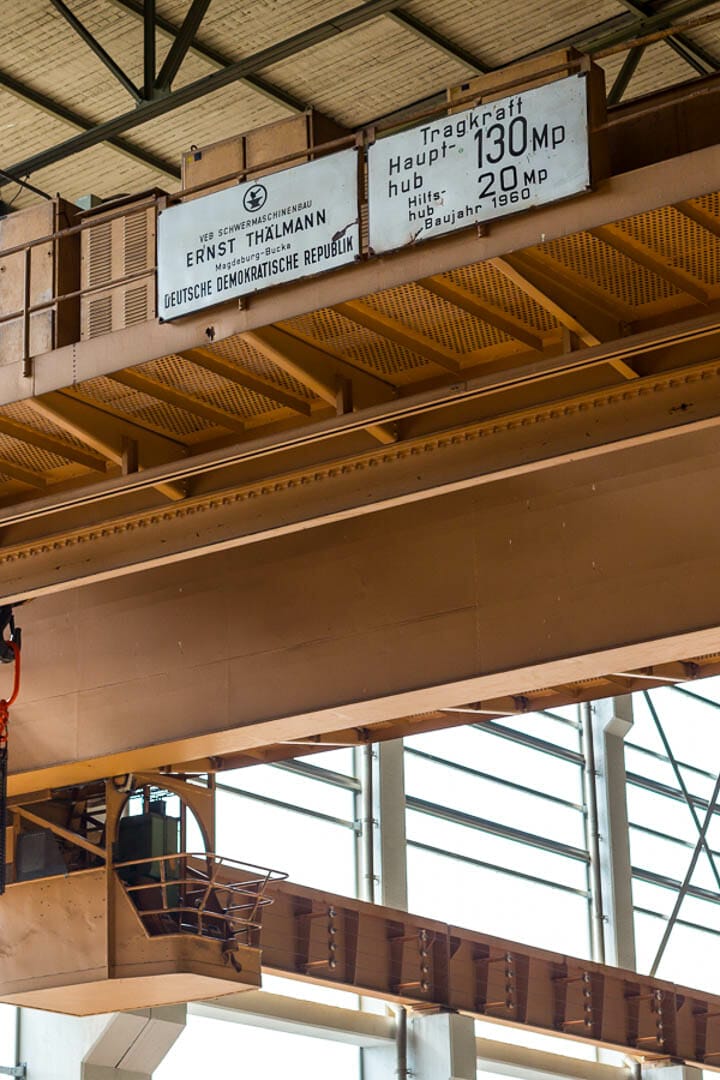
- What: Rheinsberg nuclear power station, the first such facility (after test models) in East or West Germany. Now closed, thankfully, though not quite yet abandoned.
- Where: Am Nehmitzsee 1, 16831 Rheinsberg, Germany.
- How to get there: It’s a 10-kilometer cycle from Rheinsberg itself. There’s a train station in Rheinsberg but they’re not too frequent. You might be better off getting the train to Neuruppin and getting the bus from there to Rheinsberg, though then you’ll still have the 10K cycle in front of you. Fürstenberg is also not too far away. Here’s a map in case it makes things easier. It might.
- Getting in: Well, there’s no sneaking in as I mentioned before. You’ll need to go through official channels for this one. Groups of up to 15 people can visit for free any day except weekends if you register in advance. The tours are in German. Details here at this link.
- When to go: Any weekday.
- Difficulty rating: 3/10, very easy as there’s no sneaking, hiding, creeping or crawling involved. The technical presentation is quite, well, technical. It’s fascinating, but all in German and it lasts at least an hour. There are no presentations in English as far as I’m aware. But after the presentation you’ll be given a little tour of the facility.
- Who to bring: Your old physics teacher.
- What to bring: Bring a few sambos to ward off the hunger, but I wouldn’t eat them at the plant – just in case. Bring a camera for photos, some water for drinking, and a map so you don’t get lost in the woods on your way home. You wouldn’t know what kind of wonderful creatures you might meet – four-eyed fish, fluorescent owls, six-legged boar etc.
- Dangers: Radiation. The rods and reactor are gone but there’s still contaminated material on the site. Otherwise they wouldn’t need another five years to clean it up. An afternoon visit should be OK though. Hopefully.
Busy no more, ENJOYING retireMENT
Kraftwerk Vogelsang
Kraftwerk Vogelsang is a powerless power plant. People gave their lives building it and fighting over it. Now that they’re gone, nobody wants it at all.
Underberg
Security was tight in the Underberg herbal rotgut distillery as they thought only five humans knew the secret recipe. Now the secret’s out.
Tetra Pak
Glass milk bottles are rejoicing with schadenfreude after learning of Tetra Pak’s fate. The packaging giant abandoned its factory in Heiligensee in 2013.
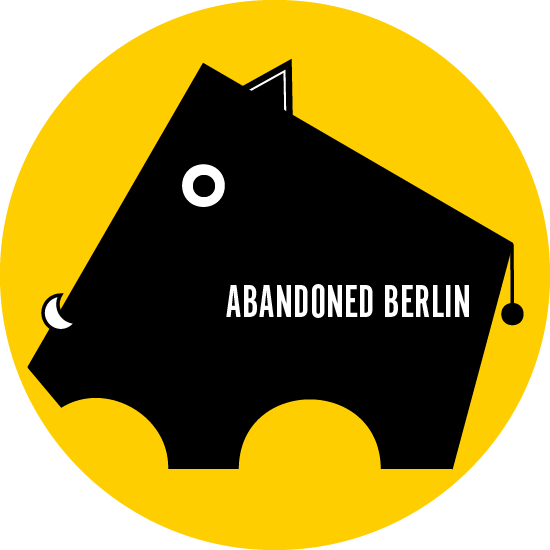
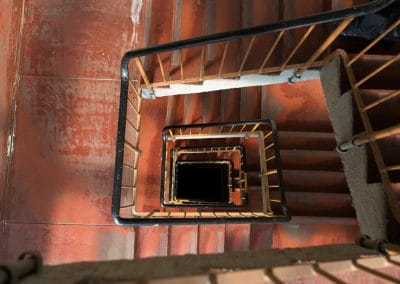
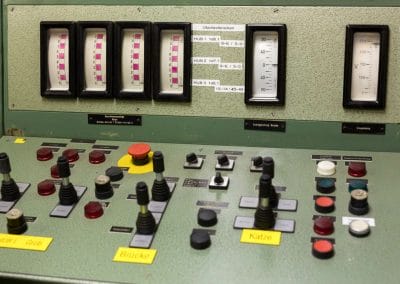
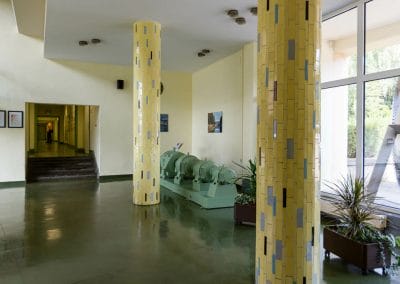

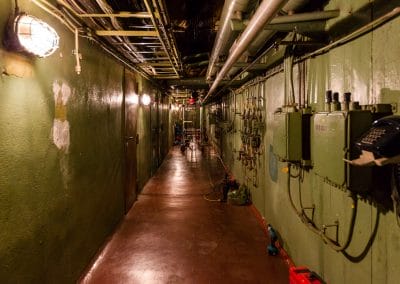

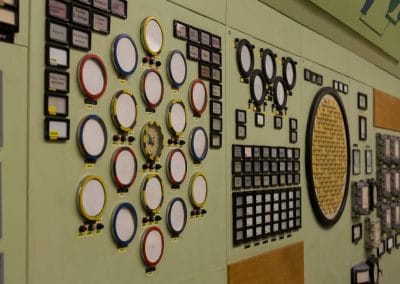
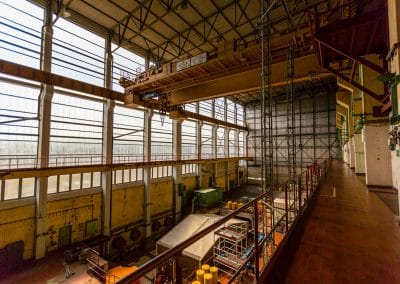
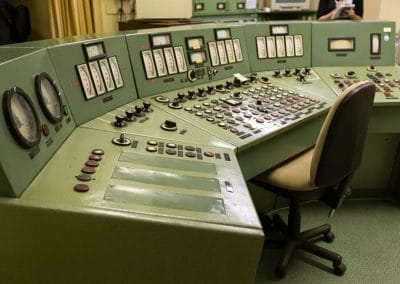


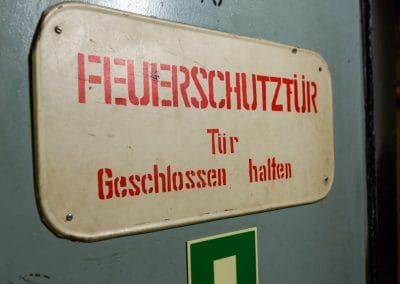
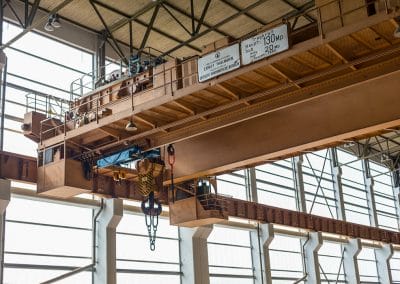

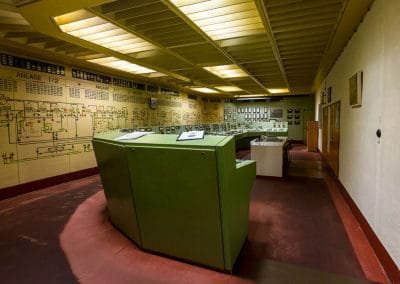
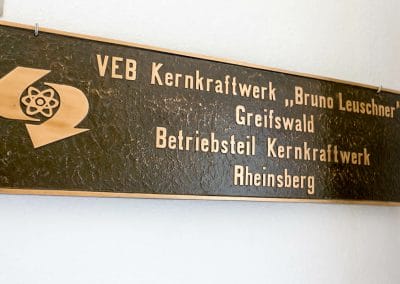
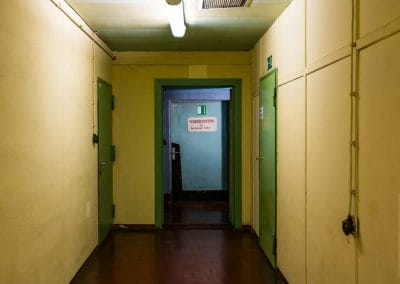
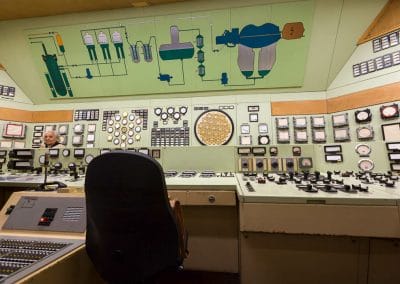

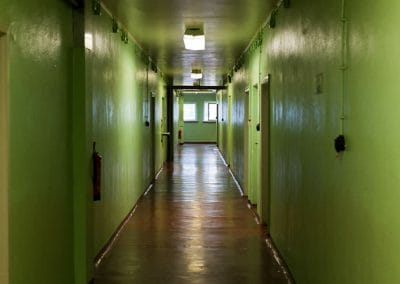

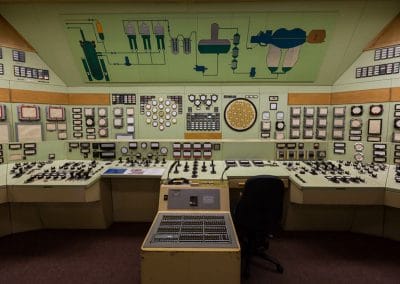
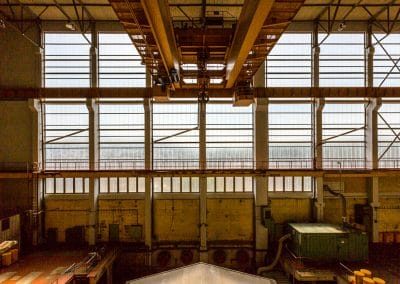

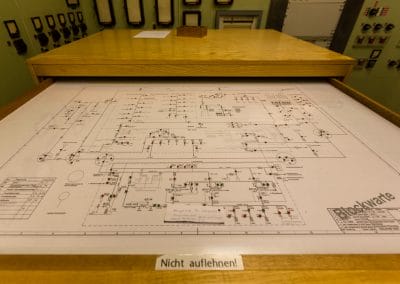



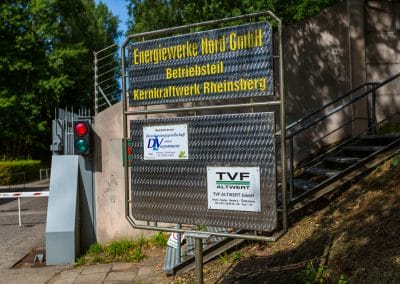
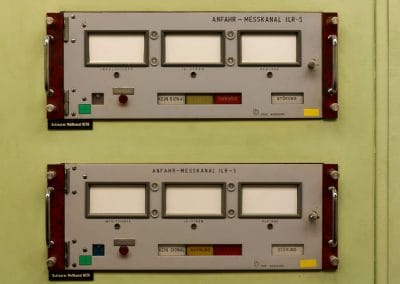
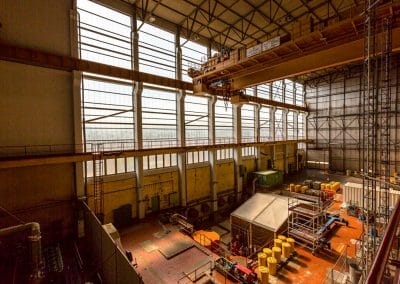
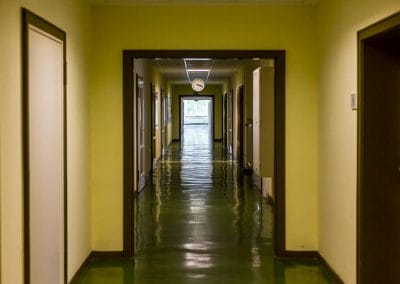
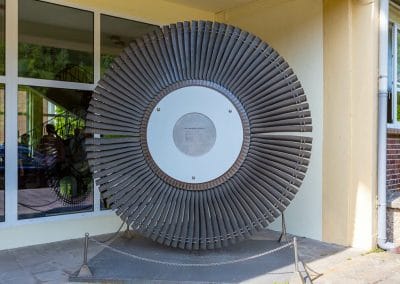

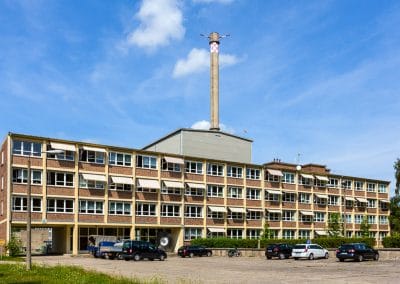

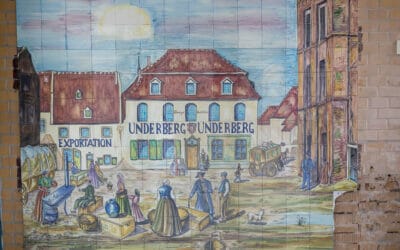

Any update?
Can you use tripods, or is all photography handheld only?
was there today..unless you are really interested in nuclear plants, not very recommendable. The first part was a presentation, which took a little over an hour, and was boring and very technical. And then we went on a tour..there is nothing much left. All yo will see if what you see on Ciaran’s post.nothing more. Some abandoned control rooms, and a huge hall where the turbines used to stand. I would not recommend it (although it is a free tour). PS suppose you could tripods..but there is not so much time, as it is a guided tour
Do u still know if the tours are being given, right e-mail etc?